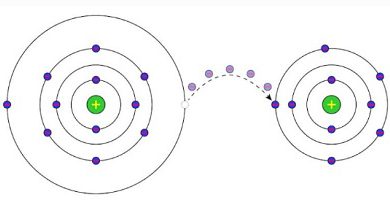Types of Summary with Definition and Examples
We explain what a summary is and the types of summary that exist. In addition, the steps to perform one and an example summary.
What is a summary?
When talking about a summary, reference is made to a text of variable length, always having a short time, in which the ideas of a text of greater size and/or greater complexity are synthesized or abbreviated. A summary is stipulated to be 25% of the size of the original.
The summaries are condensed forms of a text or speech, which means the selection of its most central, vital, or important material, and the discarding of everything that is superfluous, decorative, or supplementary. They are usually performed with the intention of:
- Provide a sample or a mouthpiece of the contents of any book (such as the text on the back cover).
- Allow the researcher to find out the main points of an article (such as the abstracts of the academic articles).
- Summarize the information of a text in a series of notes for later reading (as in class books).
- Provide the core of the information generated over an extended period of time (as in bank account summaries).
- Check, as an exercise, the reading ability of the students of the school.
Similarly, the elaboration of abstracts is usually a fundamental study technique: it allows us to verify that we fully understood the text since we can choose which are its main ideas and which are disposable ideas.
Types of Summary

We can identify different types of summaries:
- Executive Summary. It is a type of summary widely used in the financial and business world, in which it seeks to interest in the dynamics of a future company or organization to those who read it, giving the most relevant points of it.
- Bibliographic review. It is the summary that is made of a book, a work of literature or a dissertation, even a scientific book, either for informative purposes or simply for a record in a library, in a digital bookstore, or a book classification system.
- Press summary. A press summary or informative summary is usually made, in which the news of the day is synthesized by choosing them based on their importance for public opinion (or editorial criteria), in the mainstream media such as TV.
How does a summary? – Types of Summary
To make a summary correctly we can be guided by the following steps:
- Read the original text thoroughly. This is essential to make the summary: you can not summarize what is unknown, nor can you summarize a text by reading it above, because we will ignore which are the main ideas and which are the secondary ones.
- Separate the text into paragraphs. Once separated, mark in each paragraph the main, secondary, and supplementary ideas, using a different highlighter for each category. If necessary, take notes on the margin or on a separate sheet.
- Transcribe the underlined. Copy in your notebook the main and secondary ideas only, and try to order them to form with them a single paragraph.
- Rewrite the paragraph. Rewrite the paragraph with the primary and secondary ideas ordered, but this time try to do it with your own words.
- Check the writing. Reread your final text and eliminate the things that come before it. Add a title and summary book information (author, title, editorial) somewhere.
Example of Summary
Summary of the news:
“Argentine” dinosaurs: our ambassadors with everyone now with their own book
The territory of what is today the South American nations of Argentina and Chile, was hundreds of millions of years populated by dinosaurs, such as Patagotitan mayorum, discovered in Chubut. Although there are numerous books and documentaries about dinosaurs, few focus on the findings of this region, which paradoxically is a very abundant fossil.
For this reason, Federico Kukso, a scientific journalist, decided to publish with the paleoartist Jorge González the book Dinosaurs of the end of the world (Blok B, 48 pages, 299 pesos). In this book oriented to boys, the “Argentinean” dinosaurs are detailed and they are represented in a possible natural habitat, similar to that of Patagonia, and answer important questions such as why there were so many dinosaurs in the Argentine area. How do you know what color a dinosaur was? And other curiosities that will satisfy the curiosity of adults and children alike.
This book will be presented on Saturday, July 7 at 5:30 p.m. at the Cultural Center of Science (Godoy Cruz 2270, Library Room), in Buenos Aires.





